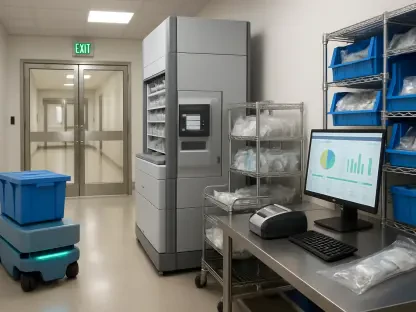In today’s rapidly evolving healthcare landscape, digital technologies are increasingly recognized as powerful enablers of personalized care and self-management. Understanding how these tools can effectively support patient pathways and experiences is crucial for health providers aiming to implement sustainable, impactful digital health solutions.
Introduction to Digital Health Tools in Healthcare
The Evolution of Digital Health Initiatives
Digital health initiatives have matured significantly over the past decade, moving from basic telehealth services to advanced platforms capable of in-depth health monitoring and personalized care. Early efforts primarily focused on virtual consultations and simple remote monitoring, but recent advancements have introduced sophisticated data analytics and AI-driven predictions to enhance patient outcomes.
These technological shifts have transformed how healthcare providers deliver care and how patients engage with their own health. While virtual consultations offered a convenient way to reach patients remotely, modern tools now allow continuous health tracking and provide actionable insights based on real-time data. This progression is evident in the shift from reactive to proactive care models, where healthcare providers can predict and address potential health issues before they escalate.
Stakeholder Perspectives: Insights from Healthcare Leaders
Insights from industry experts like Rachel Binks from the NHS Airedale Hub, Saif Ahmed from Greater Manchester Care Record, and James Maynard from Access shed light on the multifaceted benefits and challenges of digital health tools. Each brings valuable perspectives shaped by their unique backgrounds and experiences in integrating technology with patient care.
Rachel Binks, with a background in critical care, emphasized the importance of preemptive care to reduce hospital admissions through digital interventions. Her work at Airedale Hub focuses on leveraging technology to provide early warnings and timely interventions, thereby preventing patient deterioration on wards. Saif Ahmed highlighted how digital tools help monitor patients remotely and integrate care data, ensuring that patient needs and preferences are captured, especially during emergencies. James Maynard stressed the role of data in personalizing patient care, underscoring the need for robust data analytics and interoperability standards to make digital health tools truly effective.
The Role of Technology in Personalized Care
Enhancing Patient Engagement
Digital health tools such as apps and wearable devices have revolutionized patient engagement by enabling continuous health tracking and personalized feedback. At Airedale, the introduction of the Luscii app has empowered patients to actively participate in managing their health by providing real-time data and setting personalized health thresholds that trigger clinical responses when necessary.
Rachel Binks shared that the Airedale Hub has evolved from simple video assessments to using the Luscii app for comprehensive patient monitoring. The app collects health observations and allows patients to document their symptoms and vital signs directly. The data is displayed on a clinician’s dashboard with personalized thresholds, so any deviation from the norm triggers an alert, prompting timely clinical interventions. This engagement empowers patients and fosters a sense of accountability and awareness about their health status.
Integrating Data for Comprehensive Insights
Utilizing comprehensive data analytics is a cornerstone of modern digital health strategies. James Maynard emphasized the importance of leveraging accumulated health data to gain deeper insights into individual health patterns. Coupled with technologies like Fitbits, these insights can preemptively identify health issues, leading to timely interventions and proactive care models.
James noted that the maturity of digital technologies has reached a point where they can offer far more detailed insights into patient behavior and health conditions. Aggregating data from various sources, including wearable devices and health apps, allows healthcare providers to construct a holistic view of a patient’s health profile. This integration enables clinicians to make more informed decisions tailored to the individual’s unique health needs.
Challenges in Implementing Digital Health Solutions
Overcoming Data Overload
One significant challenge in implementing digital health solutions is managing the abundance of data generated. Saif Ahmed discussed the difficulty in discerning actionable insights from vast datasets, stressing the need for balancing the inflow of information to prevent overwhelming healthcare providers.
Saif highlighted that while digital health tools can collect extensive amounts of data, not all of it is immediately useful. Filtering through this data to find actionable insights is crucial in making digital health tools effective. Ensuring that the data gathered is relevant and can be easily integrated into the clinician’s workflow prevents the risk of data overload, which can impair decision-making rather than aid it.
Ensuring Device Reliability and Interoperability
Technical reliability and seamless data integration are pivotal for the success of digital health initiatives. The interoperability of various devices and platforms remains a significant hurdle, with James Maynard highlighting the necessity of a common data model to ensure fluid data exchange and prevent technological siloes.
James emphasized that the lack of interoperability is a primary barrier to the effective implementation of digital health tools. Different devices and platforms often operate on disparate systems, making it challenging to integrate data seamlessly. Adopting a common data model would standardize how data is shared across different systems and devices, ensuring smooth information flow and better coordination among healthcare providers.
Effective Strategies for Measuring Impact and Ensuring Safety
Real-Time Monitoring and Quick Interventions
The ability to monitor patient health in real time and respond swiftly to any changes is crucial for the success of digital health tools. Rachel Binks noted the immediate impact of such monitoring, which allows swift clinician intervention upon detecting deviations in a patient’s health status, thus preventing further deterioration.
Rachel shared that real-time monitoring has been instrumental in flagging subtle changes in a patient’s condition that might otherwise go unnoticed. Immediate awareness allows clinicians to intervene quickly, often averting more severe health complications.
Leveraging Machine Learning for Predictive Care
Saif Ahmed shared insights from the Greater Manchester Care Record, where machine learning algorithms predict patient deterioration, enabling a more proactive care approach. This predictive capability not only enhances patient outcomes but also helps streamline healthcare resources by focusing attention on patients in critical need of care.
Saif discussed how integrating machine learning with digital health tools can revolutionize patient care by offering predictive insights. Algorithms applied to collected health data can identify patterns and predict potential health deteriorations before they occur. This proactive approach allows healthcare providers to allocate resources more efficiently, focusing on those at immediate risk while ensuring other patients continue to receive appropriate care.
Scaling and Sustainability of Digital Health Initiatives
Pilot Projects and Stakeholder Engagement
Starting with small-scale pilots is a proven strategy for testing digital health solutions before broader implementation. Saif Ahmed’s success with the Safe Steps project underlined the importance of involving critical stakeholders early in the process and designing pilot programs that meet user needs while ensuring patient safety and outcomes.
Saif emphasized that pilot projects serve as a valuable testing ground for new digital health tools, allowing healthcare providers to assess their effectiveness and safety on a small scale before committing to more extensive implementations. Involving clinicians, patients, and technical experts in the pilot phase ensures the developed solutions are aligned with actual user needs and expectations.
Ensuring Continuous Education and Training
Rachel Binks emphasized the necessity of continuous education and training to maintain engagement and effective use of digital tools. Successful pilot projects often lead to larger implementations when healthcare providers and patients are adequately informed about the benefits and functionalities of these technologies.
Rachel shared that continuous education and training are vital for the sustained use of digital health tools. Educating healthcare providers and patients about the functionalities and benefits of these tools ensures they are used effectively and consistently. Without adequate training, even the most advanced technologies can fail to deliver their promised benefits.
Securing Funding and Demonstrating ROI
Adequate funding and demonstrating return on investment (ROI) are critical for sustaining digital health initiatives. James Maynard pointed out that showing initial pilot results can attract further investment, while small efficiency gains from integrated solutions like single sign-on systems can cumulatively provide substantial benefits across the healthcare sector.
James highlighted that one of the key challenges in scaling digital health initiatives is securing the necessary funding. Demonstrating ROI through initial pilot results can be instrumental in attracting further investment. Stakeholders need to see tangible benefits and efficiencies gained from the implementation of new technologies to justify additional funding.
The Future of Digital Health Tools in Personalized Care
Enhancing Acceptance Through Patient Education
Increasing patient acceptance of digital health tools is vital for widespread adoption. As James Maynard’s experience with virtual wards illustrates, educating patients about the advantages and uses of these technologies can significantly reduce reluctance and improve engagement.
James explained that effective patient education is critical for the successful adoption of digital health tools. Patients need to understand how these tools can benefit their health and fit seamlessly into their daily lives. His experience with virtual wards showed that initial reluctance among patients significantly diminished once they were educated about the functionalities and advantages of the technology.
Innovations and Emerging Trends
In today’s fast-changing healthcare environment, digital technologies are gaining recognition as key tools in offering personalized care and enabling patients to manage their health independently. These technologies, ranging from mobile health apps to wearable devices, are transforming how healthcare providers deliver services and how patients engage with their health.
The adoption of digital tools can significantly enhance patient pathways and experiences, making healthcare more efficient, accessible, and tailored to individual needs. For instance, telemedicine platforms allow patients to consult with healthcare professionals from the comfort of their homes, reducing the need for in-person visits and promoting timely medical intervention. Wearable health monitors can track vital signs in real time, alerting patients and doctors to potential health issues before they become serious.
Understanding how to integrate these technologies into patient care effectively is critical for healthcare providers. They must carefully evaluate which digital solutions will best meet the needs of their patients and ensure these tools are user-friendly, secure, and reliable. By doing so, they can implement sustainable and impactful digital health strategies that drive better patient outcomes and overall healthcare efficiency.









